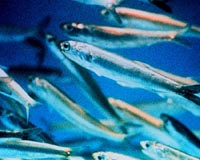 |
Terneuzen, Netherlands (AFP) Dec 14, 2009 Having a chemical plant sited almost next door to your plantation isn't normally what your average aubergine grower might want for his crop. Jan van Duijn, however, walks proudly through his greenhouse, a vast glass and metal structure spread out over five hectares (12.3 acres) where millions of aubergines are doing very nicely thank you. He's happy because thanks to a deal with a supplier, he's getting hot water piped in from the factory, which produces ammonia, to maintain the temperature at a constant 20 degrees C (68 F). The chemical site, five kilometres (three miles away), also supplies carbon dioxide which helps his aubergines grow more abundantly. All that for a competitive deal which helps the environment too, at a time when governments and climate activists are meeting in Copenhagen to hammer out an accord to try to reduce carbon emissions and curb global warming. "We're pioneers in a way," van Duijn said, while admitting that what drove him to try this business model was the cost factor. The water from the Yara factory, where it is used as a coolant, flows along underground pipes and into his greenhouse at a temperature of 90 degrees C. There it is circulated in pipes between the rows of aubergines, sharing its heat among the beds of rockwool they grow in, before being pumped back to the factory as coolant again. Similarly, CO2 released during the manufacture of ammonia is injected into the greenhouse to stimulate growth. "It's the basic principle of photosynthesis," van Duijn said. Combined with water and light, the plants convert the carbon dioxide into organic compounds, releasing oxygen as a side product. The level of CO2 inside is three time as high as the outside air, giving a crop yield that according to van Duijn is two to three times greater. He reckons the project will produce 2.5 million kilogrammes (5.5 million pounds) of aubergines a year, adding to the millions he already cultivates under glass on his land in the southern Netherlands. Their temperature is monitored and adjustable by computer, said van Duijn, who employs 10 people in summer and 30 in winter at Terneuzen. Using CO2 in greenhouses is a common practice in the Netherlands but it is rarely utilised so directly from the industrial process. The Netherlands, Europe's top exporter of horticultural products cultivated under glass -- think tulips -- has some 10,000 hectares under cover producing flowers, fruits, vegetables and other plants. According to the horticultural association LTO Glaskracht they emitted 5.2 megatonnes of CO2 last year -- around 63 percent of the agricultural sector's total emissions. Meanwhile, keeping greenhouses at the right ambient temperatures accounted for eight to 10 percent of the country's natural gas consumption. "It's the first time residual heat is being reutilised on a large scale for a private, commercial venture," said Jacob Limbeek, the commercial director of WarmCO2, the company supplying the water and carbon gas. He said the system allows for a 90 percent reduction in fossil fuel energy use compared with traditional greenhouses, which are heated by oil or natural gas. Van Duijn, whose energy bill for the new greenhouse accounts for 20 percent of fixed costs against 25 percent for the standard version, struck a deal with WarmCO2 that sets prices for the next 15 years. "That gives us a certain security," he said. "Our competitors have no idea what their energy bills will be like from one year to the next, they depend on oil prices, gas prices and exchange rates." WarmCO2, which also supplies greenhouses producing tomatoes and peppers, is aiming eventually to pipe to 168 hectares under glass at Terneuzen. According to LTO, the sector, which is also experimenting with solar panels and geothermal energy, has committed to reducing its greenhouse gas emissions by 30 percent by 2020 over their 1990 levels. Share This Article With Planet Earth
Related Links Farming Today - Suppliers and Technology
 Anchovy is king in Peru, for now
Anchovy is king in Peru, for nowLima (AFP) Dec 12, 2009 The most fished species in the world, anchovy stock is at historic highs in Peru that may be short-lived due to climate change and overfishing. Peru's fleet can catch around 20,000 tonnes each day in a four-kilometer (2.48-mile) radius. In contrast, a European zone where a ban is in effect through at least 2010, the catch level has been set at between 20,000 and 30,000 tonnes of adult ... read more |
|
| The content herein, unless otherwise known to be public domain, are Copyright 1995-2009 - SpaceDaily. AFP and UPI Wire Stories are copyright Agence France-Presse and United Press International. ESA Portal Reports are copyright European Space Agency. All NASA sourced material is public domain. Additional copyrights may apply in whole or part to other bona fide parties. Advertising does not imply endorsement,agreement or approval of any opinions, statements or information provided by SpaceDaily on any Web page published or hosted by SpaceDaily. Privacy Statement |